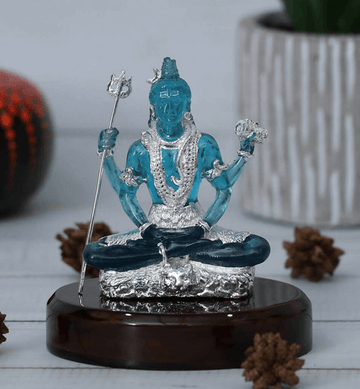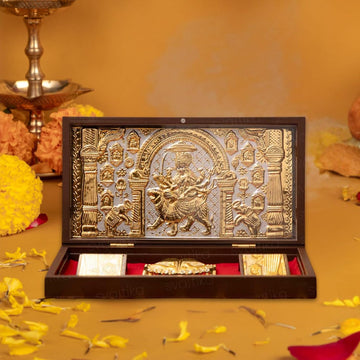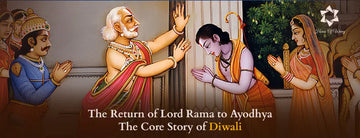A sacred full moon that celebrates the wisdom of Vyasa
Introduction:
A calm, sacred feel fills the atmosphere as people remember not just a single day but an entire tradition under the soft glow of the Ashadha full moon day in India. Ashadha Purnima festival sees grace come together with all belief, learning, and contemplation. The chanting, offerings to God, and deep-down silent reverence in people's hearts from the spiritual pulse of the day throughout the country.
Ashadha Purnima sees grace come together with all belief, learning, and contemplation. The chants, the offerings to the gods, and a silent and deep respect toward the Divine rise from the feelings of the people and form the spiritual rhythm of this day throughout the country.
However, what makes today so unique? Why do we take the time to bow before an invisible but ever-present teacher despite the bustle of contemporary life?
Because the birth of guidance itself, Guru Purnima, falls on Ashadha Purnima. At its core is Maharishi Vedavyasa, the sage who reorganized the universe of knowledge to make it accessible to all seekers, not just the privileged, in addition to interpreting the Vedas.
This day is an invitation to stop, reflect, and go back to the roots that are not limited by time in a world that is moving quickly forward. Ashadha Purnima serves as a gateway, a means of reentering the essence of Hinduism, our parampara, and ourselves, particularly for individuals who are living outside of Bharat.
Ashadha Purnima: What does it mean?
According to the traditional Hindu calendar, the Significance of Ashadha Purnima is believed to be highly auspicious. Everyone is familiar with the term Guru Purnima, right? It is the day dedicated to honoring one's spiritual guides who impart wisdom to others. Yet, Ashadha Purnima is much more than that, how? It is a day filled with powerful planetary alignments and intense spiritual energy. This day is often overshadowed by the celebration of Guru Purnima.
According to Jyotish Shastra, this Spiritual event in Ashadha is favorable for meditation, self-reflection, and inner growth.
Maharishi Vedavyasa: A Life Revealed
Who is Maharishi Vedavyasa? Which honorific title could even seem sufficient for him? He was a sublime architect from the heavens. Legend has it: Krishna Dvaipayana Vyasa came to be on the banks of the Yamuna, born of the great sage Parashara and the fisherwoman Satyavati. His very birth was an auspicious optical event: a blend of earthly nonchalance with Brahminical knowledge.
Vyasa was more than just a thinker. He was the visionary who gave us the Brahma Sutras, wrote the Mahabharata, compiled and codified the Vedas, and composed the 18 Puranas. His influence was so great that the term "Vyasa" itself came to mean "editor" or "compiler." He is rightfully regarded as the Adi Guru, the first of Hinduism's parampara of teachers.
Vyasa's greatest contribution was the compilation of the Vedas.
Sage Vyasa and the Vedas remain central to Sanatan Dharma. The Vedas were extensive, unwritten, and transmitted orally from teacher to pupil prior to Vyasa. However, Vyasa predicted that human memory and discipline would deteriorate as the Kali Yuga age drew near. He separated the Vedas into four sections, Rig, Sama, Yajur, and Atharva, and gave them to his students, Paila, Jaimini, Vaishampayana, and Sumantu, in order to preserve this holy knowledge.
This was not merely administrative work. The core of Sanatan Dharma has persisted for millennia because of divine foresight. Spiritual truth became accessible to all thanks to Vyasa.
For the Vedas and Vyasa, they were not written by him; instead, he ensured that they would endure the forgetfulness of humans. Vedic wisdom and Vyasa live through the ages, guiding seekers in every Yuga.
Significance of Ashadha Purnima in the Hindu Calendar
Besides remembering Vyasa's birth and contributions, this day also begins the return of the seekers to their higher purpose of life. It marks the onset of Chaturmas, which is the most intense period of spiritual activity that lasts for four months, during which a seeker abstains from material lure and engages himself in exercising discipline, sadhana, and vrata.
This day is also regarded as a cosmic portal where the moon's blessings and the Guru's grace meet to support the mind and spirit. The Importance of Purnima Tithi is especially emphasized on this occasion.
The Justifications for Regarding Maharishi Vedavyasa as the First Guru
The roots of Guru worship in Hinduism can be traced back to Maharishi Vedavyasa. The guru is not just a teacher; a guru drives out darkness. Vyasa is the very embodiment of this typical guru: he not only imparted knowledge but also organized it in such a way that future generations could understand it.
Hence, in our tradition, these names are interchangeable to honor the one who is termed "first teacher": Guru Purnima and Ashadha Purnima.
The Background of Ashadha Purnima and Guru Purnima
Vyasa Jayanti and Guru Purnima have their roots in the earliest documented records of religious celebration. On this day, disciples and students express gratitude to their spiritual and academic mentors.
- Presenting one's Guru with dakshina is the traditional way to observe it.
- Performing Paduka Puja as a show of deference.
- In satsangs, bhajans, and recitations of the Guru Gita or Vyasa Stuti.
For Indian ashrams and, increasingly, for the residences of the Indian diaspora, Purnima Tithi is felt to be an anchor of identity and cultural heritage.
Spiritual Significance of Honoring Gurus on This Day
The whole spiritual development, in Sanatan Dharma, is based on Guru Bhakti. In the scriptures, the guru is considered equivalent to the trinity: "Guru Brahma, Guru Vishnu, Guru Devo Maheshwara..."
- This Vyas Purnima 2025, ask yourself: Who has inspired you?
- How do you honor them in actions rather than words?
Honoring them is the way of letting go of pride and being grateful; the realization dawns that one is never lonely on this path-it is not just another ceremony.
Ashadha Purnima Observances and Offerings
In general, families and communities would celebrate the sacred day as follows:
- Take an early bath, preferably in sacred rivers, especially the Ganges, or the equivalent at home, skylights-the task being to purify the house and the person.
- Set up an image or any symbol of their guru on a little altar.
- Offer fruits, with special regard to seasonal fruits like bananas and mangoes, flowers, sandalwood paste, and incense.
- Recite shlokas and stotras devoted to Vyasa and one's own guru.
- Give Brahmins or those in need prasad and charity.
- According to certain customs, you break your fast with sattvic food after sunset.
These Ashadha month rituals connect us to our inner discipline and divinity.
Teachings of Vedavyasa for Inspiring Future Generations
The teachings of Vyasa, in the form of the Bhagavad Gita and the Mahabharata, are like mirrors to a soul. Out of many, some eternal lessons stand out:
- Dharma is multifaceted: What is right may not actually be clear. Hence, awareness and surrender are required.
- Scholarship is not wisdom: knowledge needs to be put into living.
- Humility is true greatness: Vyasa, of all Hindu sages and their contributions, bows down even to Narada and others.
His voice is a reminder of clarity in a world full of information, while the realization of wisdom is chaos.
Ashadha Purnima celebrations across India.
- In Haridwar and Rishikesh, the ashrams have week-long discourses and perform Guru Puja.
- In Maharashtra, people undertake the Wari pilgrimage on foot to Pandharpur, following the path of saints such as Dnyaneshwar and Tukaram.
- In Tamil Nadu and Karnataka, Guru Vandana ceremonies are performed in institutions and spiritual centers.
- Vyasa Puja is celebrated at ISKCON temples all over the world, honoring him as the spiritual father of the movement.
The ceremony, traditionally held in Ashadha, is now catching on in places in Singapore, New York, and London; so deep traditions can safely make a home anywhere in the world.
Integrating Products Subtly: Using Sacred Offerings to Honor Vyasa
At The House of Wemy, we think that without genuine, spiritually charged offerings, rituals are incomplete. Our copper Kalash, engraved on which has been done with the finest craftsmanship, the handcrafted Vyasa Paduka sets, and Vedic incense holders all intend to bring a piece of that ashram energy into your open home.
Whether you are resurrecting the ancestral traditions halfway across the world or commending the tradition of setting up a corner in a city apartment, each item is handpicked as a tribute to your great devotion. These make meaningful Hindu Religious Gifts, perfect for spiritual celebrations or to honor your guru with sincerity.
You can also explore our curated collection of Hindu Religious Gifts for festivals, temples, and home shrines that resonate with Sanatan values. Whether it’s Ashadha Purnima, Vyasa Jayanti, or your daily puja, a sacred offering can become a timeless gesture of devotion.
Final Take
Ashadha Purnima is also a celebration of illumination that has lit civilizations. It is often a festival of direct stillness and reflection in this world that often celebrates noise. This Guru Purnima, as you light the lamp, ask yourself:
- Who's your Vyasa?
- And how are you going to continue to shine their light?
Every home deserves a sacred center, so read our upcoming blog post on how to set up a Guru Altar at home or explore Wemy's sacred collection of Hindu Religious Gifts to enhance your practice.










